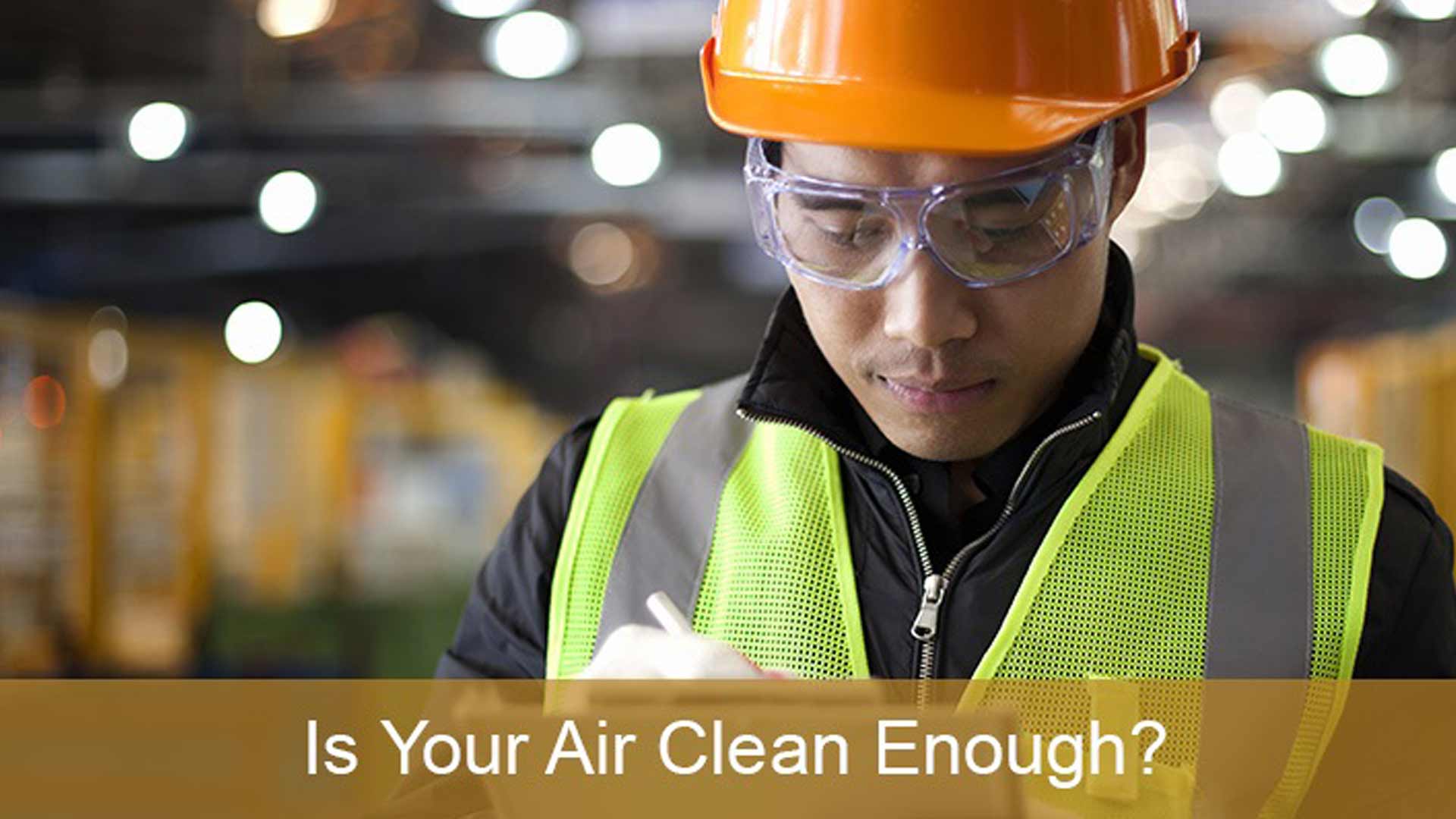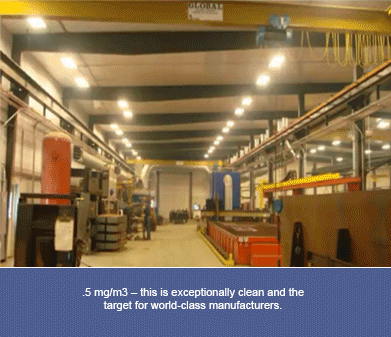The Importance of Measuring Indoor Air Quality
 Clean is subjective. Ask ten people what clean air is, and you'll probably get ten different answers. What's not subjective is the significance of Indoor Air Quality (IAQ) for manufacturers. With a dwindling skilled labor force and an increasingly savvy job hunter, the effects of IAQ on employee turnover is huge. In fact, we have found IAQ improvements can boost retention by as much as 50%.
Clean is subjective. Ask ten people what clean air is, and you'll probably get ten different answers. What's not subjective is the significance of Indoor Air Quality (IAQ) for manufacturers. With a dwindling skilled labor force and an increasingly savvy job hunter, the effects of IAQ on employee turnover is huge. In fact, we have found IAQ improvements can boost retention by as much as 50%.
But, how do you know if your air really is clean?
The first step is to ask yourself these three questions:
Am I properly testing my IAQ?
How does my IAQ compare to other manufacturers in my class?
Is my IAQ affecting my ability to attract and retain top talent?
If you can't answer questions one and two or you're not satisfied with your responses, then the answer to question three is most definitely yes. So, how do you determine if your company is positioned to attract top talent and avoid penalties and fines from regulatory agencies? The answer: properly measuring IAQ.

Two Methods for Testing IAQ
The most common indicator of a clean air challenge that requires investigation and remedy is the telltale blue haze created by weld fumes that surrounds lights. Unfortunately though, evaluating IAQ isn't as simple as looking up at your lights. There are two important measurements to determine your IAQ: ambient air quality and worker's respiratory zone.
Ambient air quality measures the total particulate levels of general air throughout the facility. A full-facility test will cost $1,000 to $3,000 on average, and the air quality experts at RoboVent can help.
When determining the air quality at the worker's respiratory zone, you measure against Permissible Exposure Limits (PELs). For this process, it's best to hire a third party industrial hygienist (IH) accredited by the American Industrial Hygiene Association (AIHA). Over an 8-hour period, these individuals set up monitors throughout the facility and on select employees. Once this monitoring is complete, the IH inspects air filters and analyzes their content.
Cost for these tests varies widely by location based on availability and demand. To find an accredited industrial hygienist, visit the AIHA. In some cases, you may be able to contact local universities to have students conduct a test and gain valuable hands-on experience.
Ambient Air Quality Targets
Once your company has a handle on their current state of IAQ, it is a good idea to set an ambient air quality target as a baseline to measure against. Ambient air quality measures total particulate in the air in terms of miligrams per cubic meter (mg/m3). Let's take a look at a range of ambient air qualities to help you gain a better understanding of your current environment and how it compares to various industries.
Permissible Exposure Limits
PELs are established by the Occupational Safety and Health Administration (OSHA) to limit worker contact with toxic particulate within their respiratory zone. Additionally, the American Conference of Governmental Industrial Hygienists (ACGIH) recommends more stringent standards for IAQ referred to as Threshold Limit Values (TLVs). Companies looking to maintain best-in-class facilities often strive to achieve or exceed ACGIH recommended TLVs since they're often lower. Here's a chart of the most common PELs for metalworking facilities to monitor:
|
Toxic Element |
OSHA PEL |
ACGIH TLV |
| Hexavalent Chromium | 0.005 mg/m3 | 0.05 mg/m3 |
| Cadmium | 0.005 mg/m3 | 0.002 mg/m3 |
| Lead | 0.05 mg/m3 | 0.05 mg/m3 |
| Nickel | 1.0 mg/m3 | 0.1 mg/m3 |
| Manganese | 5.0 mg/m3 | 0.02 mg/m3 |
Additional Resources
This information was first shared in the RoboVent webinar How Clean is Clean? Understanding Air Quality in Metalworking Plants. The complete webinar is available here.
To learn more about weld fumes, how they affect your IAQ and what you can do about them, make sure to watch RoboVent's 5-part webinar series on the subject available at robovent.com/category/webinars/.
Contact Us With Your Questions!
SUBSCRIBE TO
BLOG UPDATES









